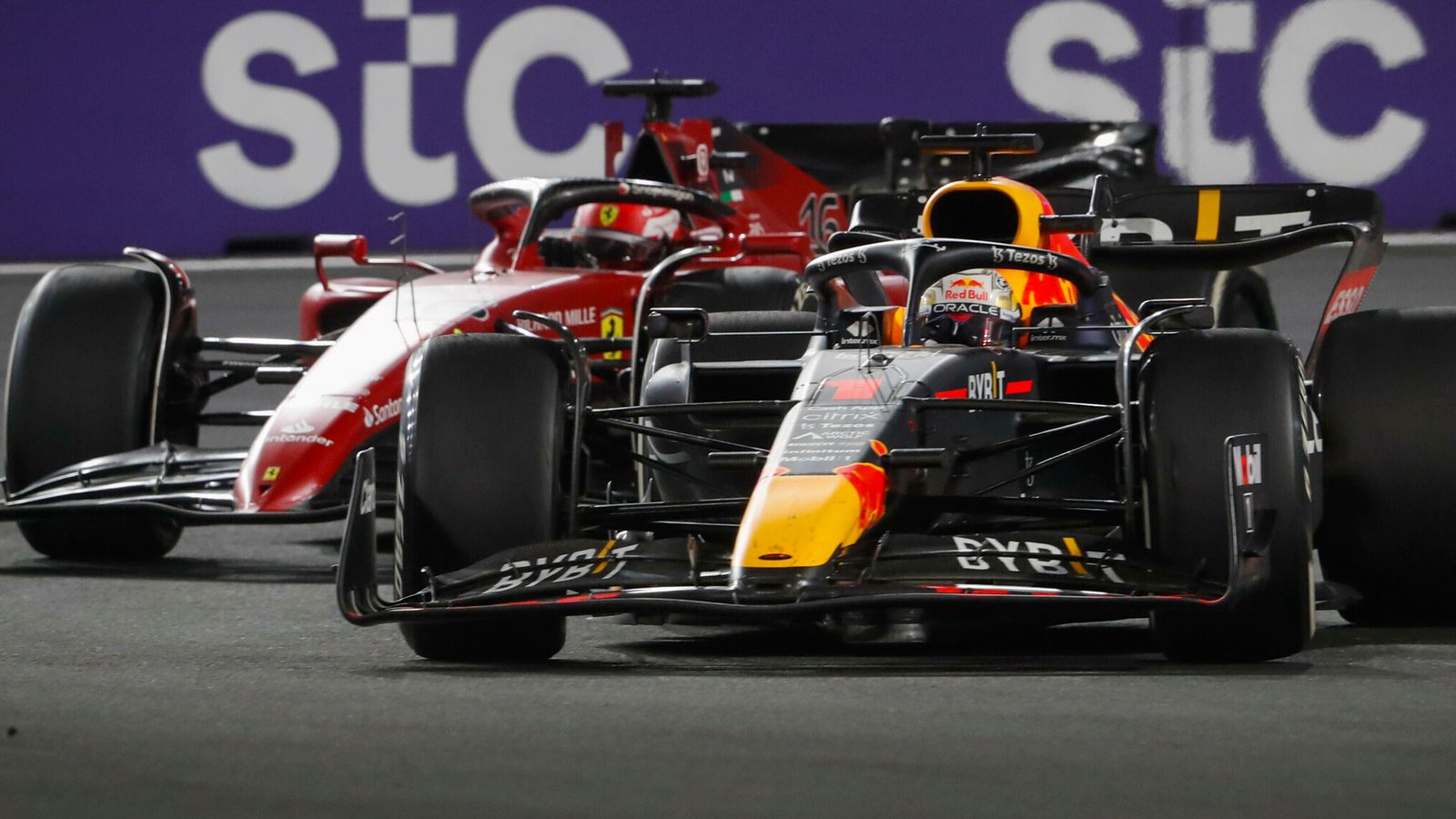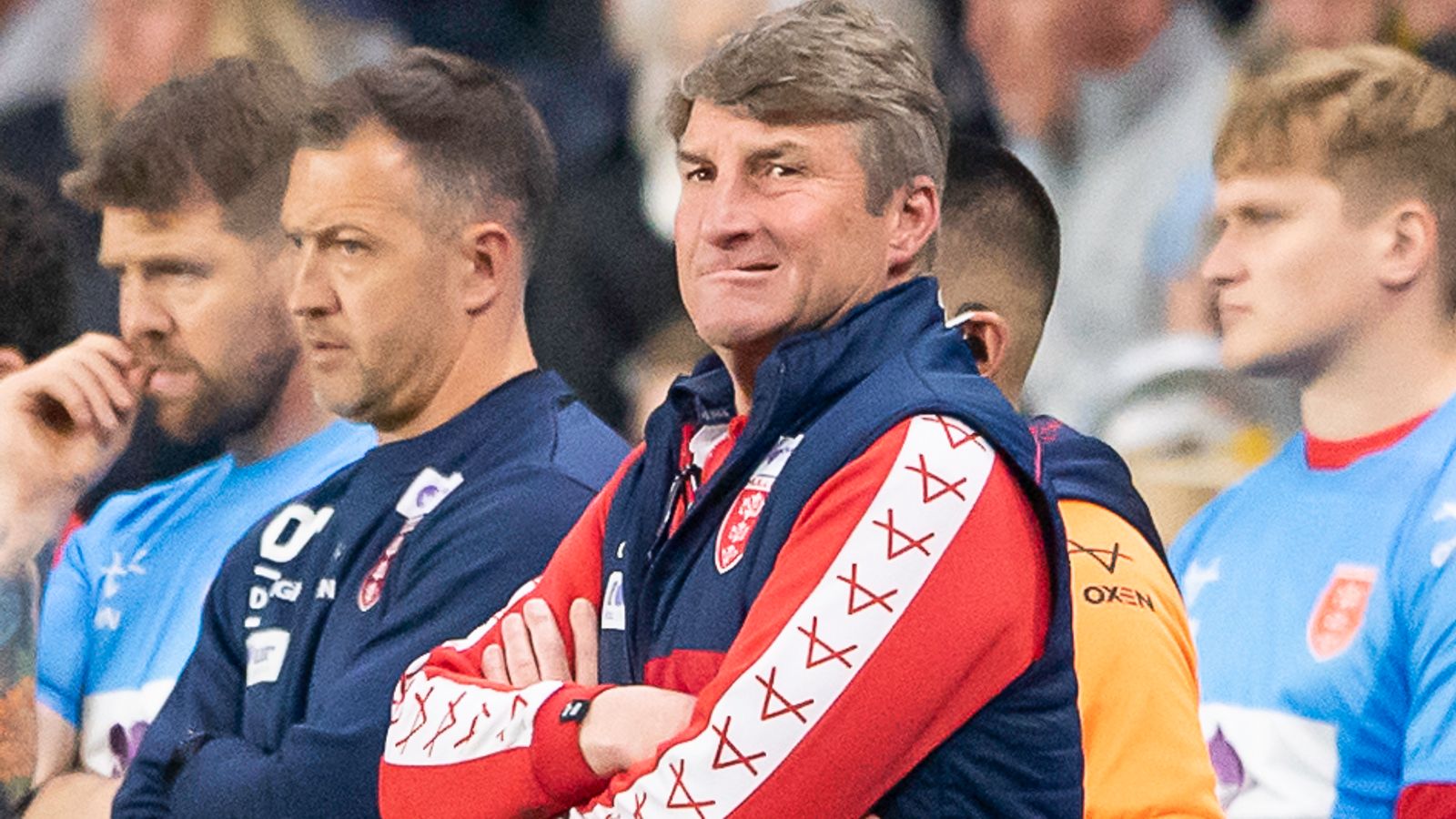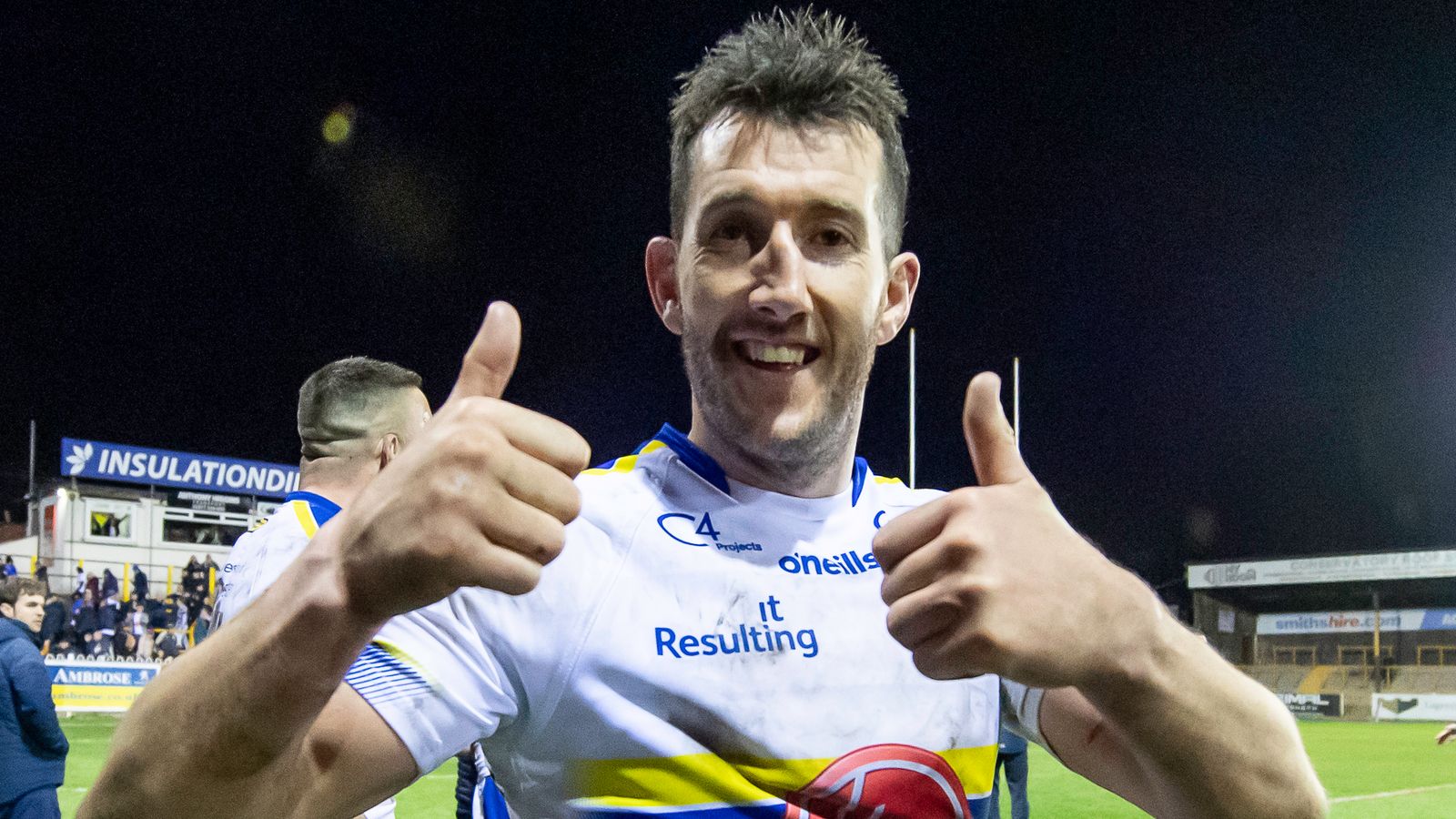Formula 1 in 2022: Explaining the bright start for new cars and battles as drivers relish ‘go-kart’ races

Anthony Davidson is at the SkyPad to analyse the sensational battle between Max Verstappen and Charles Leclerc in the Saudi Arabian Grand Prix.
Anthony Davidson is at the SkyPad to analyse the sensational battle between Max Verstappen and Charles Leclerc in the Saudi Arabian Grand Prix.
So far, so very good for Formula 1’s rules revolution.
We’re only two rounds into 2022 but the all-new cars have so far more than delivered on their promise of more wheel-to-wheel battles and exciting races, with thrilling duels for the win between Max Verstappen and Charles Leclerc and overtaking through the field in Bahrain and Saudi Arabia.
It led to Sky Sports F1’s Jenson Button saying after the Jeddah race that he was “loving the new regulations.
“I loved that people could fight back, it’s not that you can make a move and you can pull away,” added the 2009 world champion. “That’s what’s great about Formula 1 right now.”
This isn’t just a new era for Formula 1, it’s a new Formula 1 altogether. And here’s why…
What’s happened so far? | ‘The rules are working’
Heading into the season opener, there weren’t just question marks over what the new pecking order could be but also over whether the cars would be able to follow, and most importantly race, as hoped.
The previous iteration of cars was branded as “dreadful” in this regard by F1 chief Ross Brawn, who oversaw the huge changes for 2022 which aimed to generate downforce and push ‘dirty air’ under the car rather than around it, thus making it much easier for the car behind to attack.
The answers from the opening two races have been emphatic, particularly from Verstappen and Leclerc.
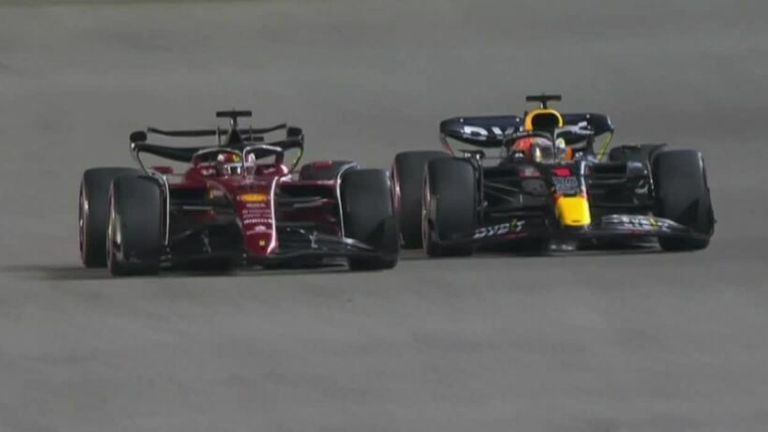
Anthony Davidson analyses the battles between Max Verstappen and Charles Leclerc down the years after the Red Bull and Ferrari driver went head-to-head at the Bahrain GP.
The two drivers, spearheading Red Bull’s and Ferrari’s championship charges, have engaged in epic head-to-head combat in both races. In Bahrain, Leclerc led from pole but was followed closely by Verstappen for much of the race and the pair went wheel-to-wheel in three straight laps – with the world champion twice passing the Ferrari into Turn 1 before being re-overtaken into Turn 4. Leclerc would go on to win.
There was a repeat of that thrilling duel again in Jeddah, and this time it was revenge for Verstappen as the positives of the new cars and tactics involved were even clearer to see. Again, Leclerc was in control from the lead but, with the cars more even this time and with Verstappen having a huge straight-line speed advantage, the drivers, able to follow right around the circuit, battled lap after lap and even squabbled over DRS before Verstappen finally grabbed the lead with four laps left and held position.

A young Max Verstappen and Charles Leclerc argue during their karting days, with the pair now forming one of the biggest rivalries during the current F1 season.
“Oh my god, I really enjoyed that race,” said Leclerc after Saudi Arabia. And that coming from the losing driver.
“Unquestionably, the rules are working,” added Sky Sports F1’s Karun Chandhok.
What’s so different? | ‘It’s like a go-kart race!’
As mentioned above, the fact that drivers can consistently follow the car in front is a big change to previous years, and this has obvious benefits. Drivers are now able to follow their prey closer before launching a move, and even after an overtake is pulled off the battle is far from over.
Previously, an overtake from one car on another would suggest a significant speed advantage and so they would often scamper off into the distance afterwards, particularly with the overtaken car losing downforce behind. But now the cars lose less performance behind one another, are able to follow, and so the overtaken driver has been able to stick with their rival and often overtake them right back.
As noted from Button earlier, drivers can “fight back” – while F1 2022 has also been compared to go-kart races with its frantic racing and near-constant wheel-to-wheel battles.
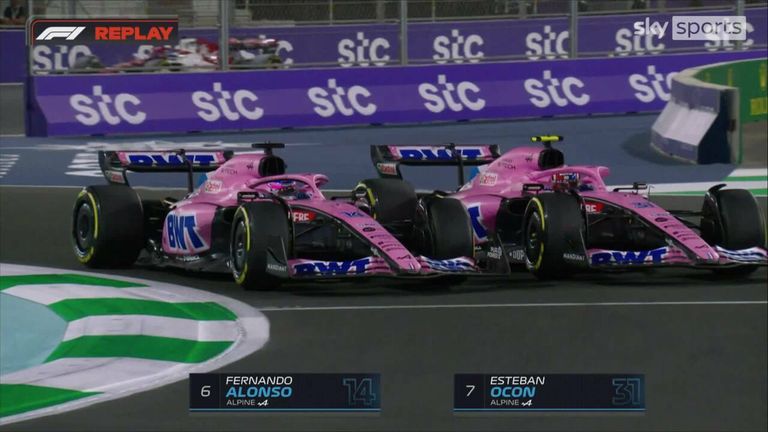
Alpine team-mates Fernando and Esteban Ocon battle it out for sixth spot early on in the Saudi Arabian Grand Prix.
“It’s like they’re in a go-kart race… you don’t normally see the fighting that we’re getting at the moment,” added Button.
It isn’t just Leclerc and Verstappen who have provided examples of this, but notably Lewis Hamilton versus Kevin Magnussen and the Alpines of Esteban Ocon and Fernando Alonso in Saudi Arabia.
“It’s a completely different philosophy now,” explained Ocon. “Racing with these cars is pretty much like a go-kart race, so it’s good fun.
“Before, basically, as soon as we had a chance we had to go for it because you might only have one chance. Now you have two or three chances in the lap to overtake so you need to time it right.”
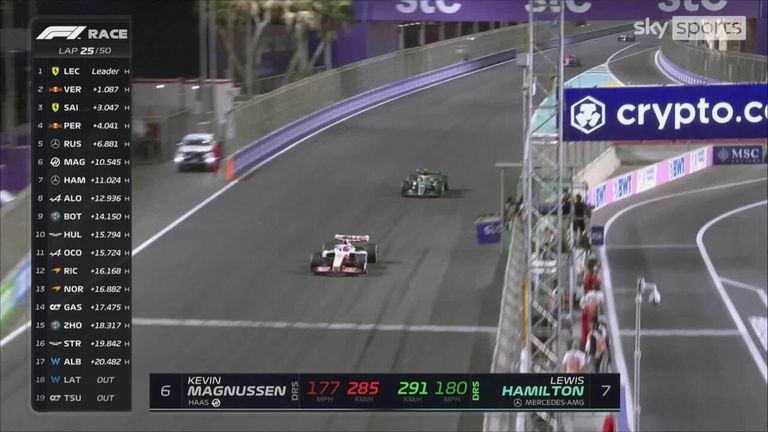
Lewis Hamilton moved up to sixth place after overtaking the Haas of Kevin Magnussen.
Leclerc added: “It is definitely a step forward compared to last year in terms of following.
“The balance of the car is much more predictable, compared to last year’s car where it was very difficult to understand whether you will lose the front, or the rear being behind.
“This helps us to have the confidence, to actually push behind someone and to be a bit closer.”
Could DRS be removed and what will Australian GP deliver?
Another aspect of the new rules we saw to great effect in Saudi Arabia was DRS, the Drag Reduction System on the rear wing which opens for a driver when within a second of the car ahead to give them more straight-line speed.
In Jeddah, Verstappen and Leclerc were caught trying to tactically ensure their car was behind the other at the DRS detection line to gain that speed advantage, which the Red Bull driver eventually used for the win.
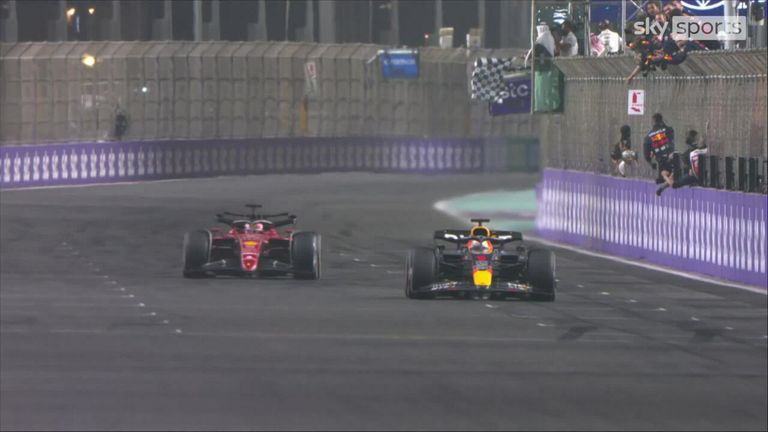
Former F1 driver Anthony Davidson gives his take on how both Verstappen and Leclerc used DRS to battle for P1 in Jeddah.
F1 hope that DRS – which was introduced in 2011 – can eventually be removed from the cars, with drivers then having to rely on moves into corners rather than on the straights. But it’s clear we’re not at that point just yet.
“If I didn’t have DRS today I would have never passed,” insisted Verstappen in Saudi.
“Deep down I’m not a huge fan of DRS and I hope in the future we’re able to get rid of it altogether,” added Chandhok.
“But I also know that DRS is making the racing more exciting for all of us on the sidelines. It’s a part of the skillset, they’re having to calculate where to use it for their benefit.”
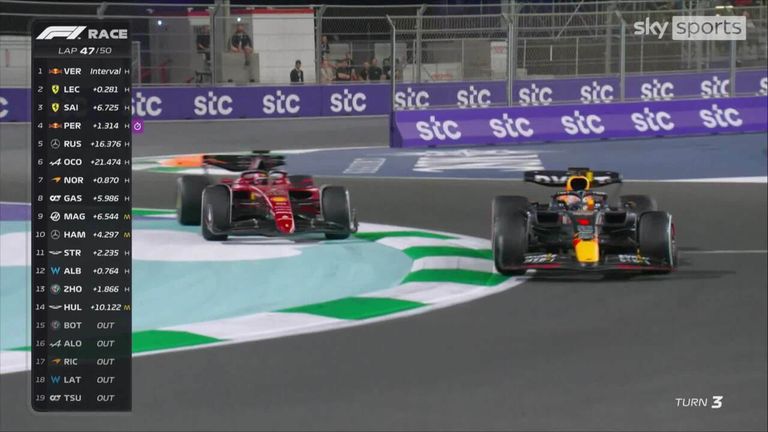
Max Verstappen finally managed to pass Charles Leclerc with just three laps remaining in the Saudi Arabian Grand Prix.
And DRS is set to be a big talking point and factor for this weekend’s Australian GP, with Melbourne’s Albert Park circuit to feature four DRS zones rather than the usual three to give drivers more opportunities for overtakes.
From what we’ve seen so far, we’re set for another thriller in Round Three.
Watch all the Australian GP live on Sky Sports F1 this weekend, with the race at 6am on Sunday.

